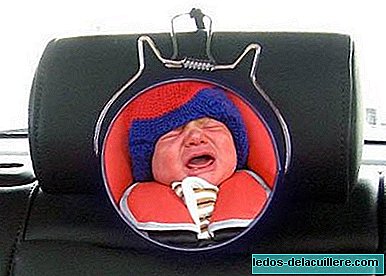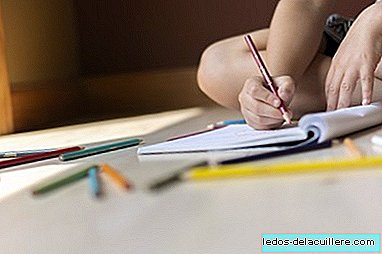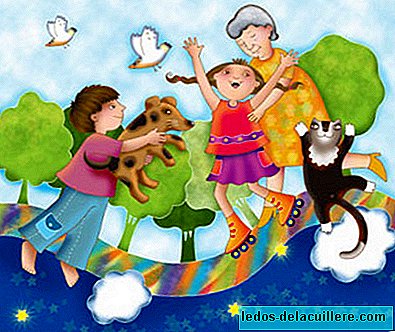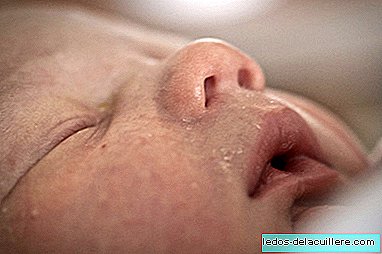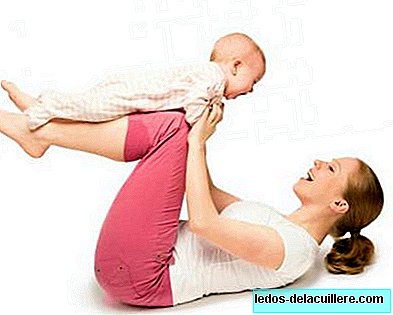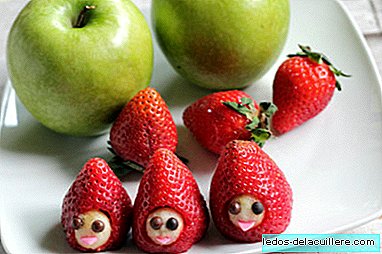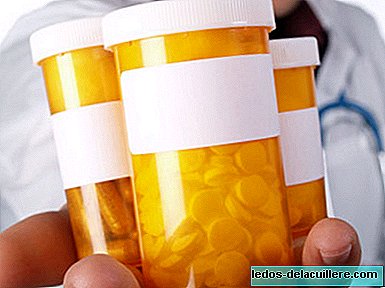
Medications should be considered as such and should not be taken without a doctor's prescription in any case, but much less if they are babies or children. One of the most frequent mistakes that parents make is to practice ourselves as doctors at home, sometimes offering the medication, or the inappropriate dose or treatment.
Also leaving medications in unsafe places, with the consequent danger of accidental intake by small children, is common in many homes, an aspect that should not be neglected.
The FDA (United States Department of Food and Drug Administration) provides a number of advice about medications and children under the meaningful title of "Children are not simply small adults." It is especially oriented to over-the-counter medications.
Start by remembering that you have to be very careful when giving a medicine to a baby or a child. Even over-the-counter medications without a prescription are serious medicines. These are the tips to keep in mind:
- Always read the information about the ingredients and instructions for use listed on the label of your over-the-counter medication. This is important to safely select and use all over-the-counter medications. Always read the label before administering the medication. Make sure you understand the amount of medication you should give and when you can repeat the dose.
- Know the "active ingredient" of the medication for your child. That is the substance that causes the medication to take effect and is always indicated at the top of the label with the information and instructions. In some cases the same active ingredient can relieve more than one discomfort. That is why the same ingredient can be found in many different medicines used to treat different symptoms. For example, one cold medicine and another to remove the headache may contain the same active ingredient. So if you are treating a cold and a headache with those two medications, and both contain the same active ingredient, you may be giving the normal dose twice. If you have questions about your child's medications, check with your doctor, nurse, or pharmacist.
- Give your child the right medication in the amount due. Not all medications are indicated for a newborn or a child. Medications of the same brand can be sold in many different degrees of concentration, as is the case in formulas for newborns, children, and adults. Doses and instructions are also different for children of different ages and weights. Always use the correct medication and follow the instructions to the letter. Never use a higher dose than indicated, even if your child seems to be sicker than before.
- Check with your doctor, pharmacist or nurse to tell you which medications can interact with others and which ones cannot. Medications, vitamins, supplements, and food and drinks are not always compatible with each other. Your health professional can advise you.
- Use the measuring instrument that comes with medicine, such as a dropper or measuring cup. Another type of implement, such as a kitchen spoon, could contain an undue amount of medicine.
- Distinguish between a spoon (tablespoon or tbsp., In English) and a teaspoon (teaspoon or tsp., In English). Don't confuse them! A tablespoon contains three times more medicine than a teaspoon. In measuring implements, one teaspoon (tsp.) Is equal to “5 cc” or “5 ml.”
- Know the weight of your child. The instructions for some over-the-counter medications are based on weight. Never try to guess or estimate the amount of medication you should give your child, or try to calculate it based on the doses indicated for adults. If the dose that corresponds to the child's age or weight is not indicated, call your doctor or other members of your group of health professionals.
- To avoid an emergency poisoning situation, always use covers that are difficult to open for the children After each use, close the lid tightly. Special care must be taken with products containing iron; these are the leading cause of death from poisoning among young children.
- Store all your medications in a safe place. Today the medicines taste good, they come in attractive colors, and many are chewable. Children might believe that these products are sweet. Avoid an emergency due to an overdose or poisoning, keeping medications and vitamins in a safe place that is neither in sight nor within the reach of your child (or his pets). If your child ingests an excessive amount, call the Poison Center Hotline Hotline at 1-800-222-1222 (on duty 24 hours a day, 7 days a week in the United States). ), to the emergency telephone number 112 or 911. In Spain, the National Center for Toxicology has the telephone number 915620420.
- Examine the medication three times to check for signs of tampering or damage. First, examine the outer packaging and check for cuts, cuts, or tears. Second, once at home, read the label on the inner container to verify that it is the correct medicine. Make sure the cover and seal are not broken. Third, examine the color, shape, size, and smell of the medication. If you notice something different or unusual, talk to your pharmacist or other health care professional.
Hopefully all these tips for the proper use of medications in children You have been useful.


